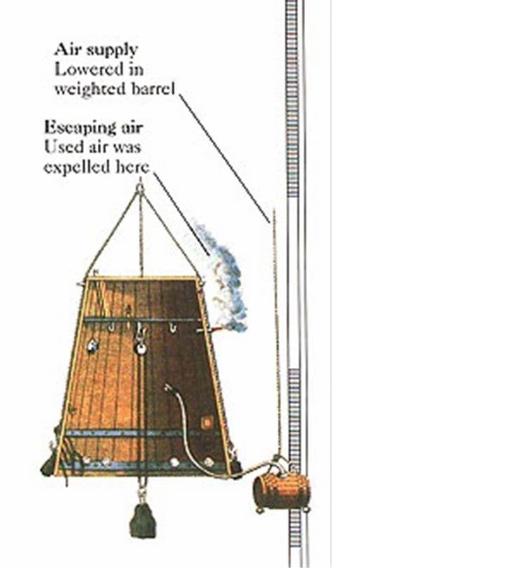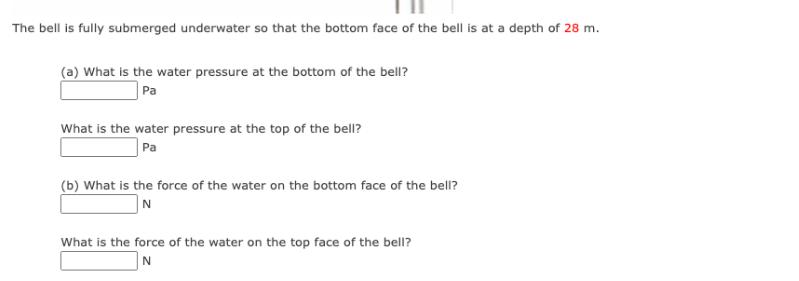Answered step by step
Verified Expert Solution
Question
1 Approved Answer
In this problem, take atmospheric pressure to be 1.0 x 105 Pa, and the density of water to be 1000 kg/m. Use g =


In this problem, take atmospheric pressure to be 1.0 x 105 Pa, and the density of water to be 1000 kg/m. Use g = 10 N/kg. In 1690, Sir Edmund Halley (of comet fame) invented the diving bell. A drawing is shown below. Halley's bell was made of wood and roughly cylindrical in shape. We will treat the bell as if it were a cylinder 3 m high and 1 m in diameter. Air supply Lowered in weighted barrel, Escaping air Used air was expelled here The bell is fully submerged underwater so that the bottom face of the bell is at a depth of 28 m. (a) What is the water pressure at the bottom of the bell? Pa What is the water pressure at the top of the bell? Pa (b) What is the force of the water on the bottom face of the bell? N What is the force of the water on the top face of the bell? N
Step by Step Solution
There are 3 Steps involved in it
Step: 1
The problem presented appears to be a physics problem regarding fluid pressure and forces exerted by fluids Given the information we can calculate the ...
Get Instant Access to Expert-Tailored Solutions
See step-by-step solutions with expert insights and AI powered tools for academic success
Step: 2

Step: 3

Ace Your Homework with AI
Get the answers you need in no time with our AI-driven, step-by-step assistance
Get Started


